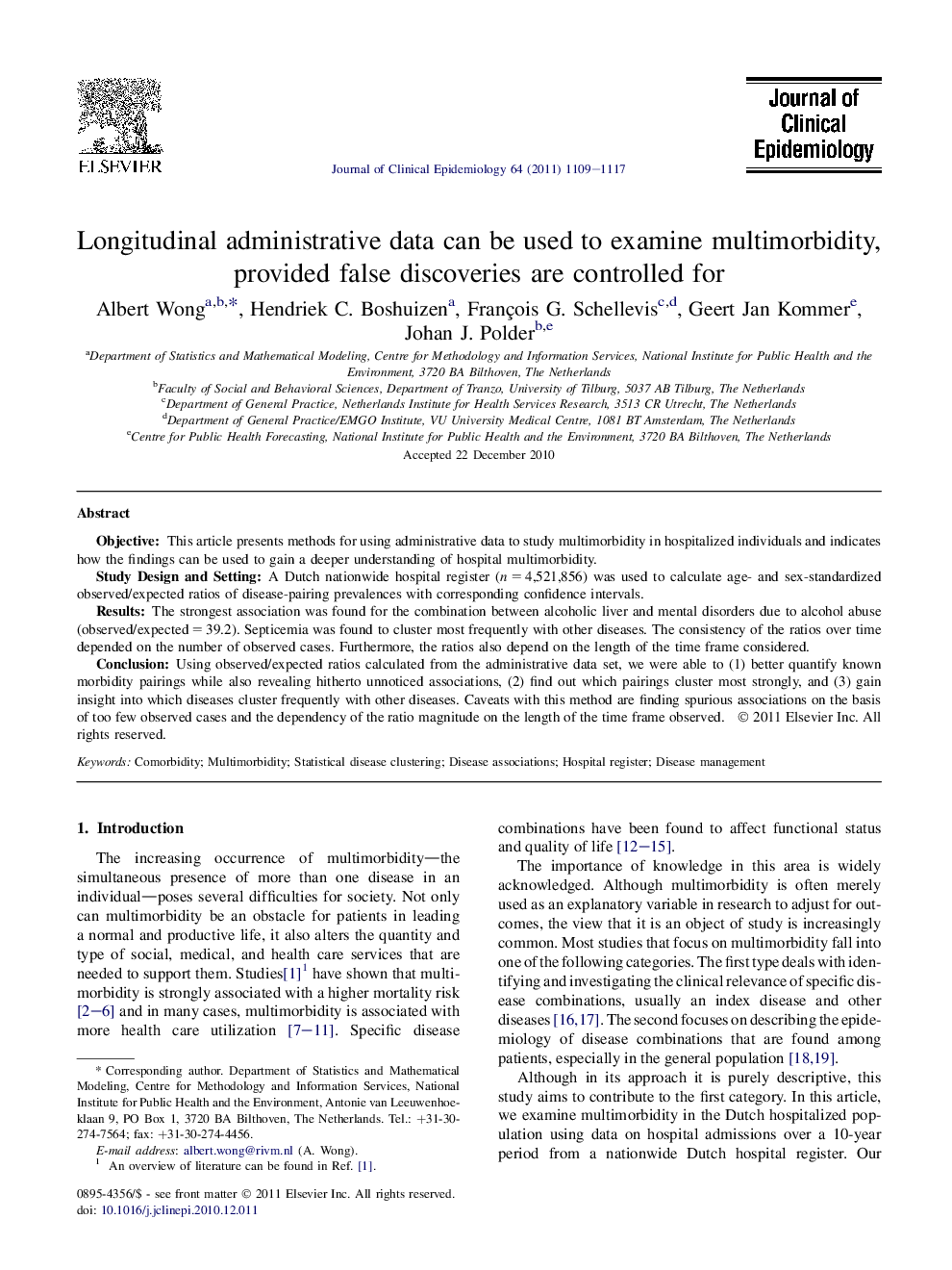| Article ID | Journal | Published Year | Pages | File Type |
|---|---|---|---|---|
| 10514170 | Journal of Clinical Epidemiology | 2011 | 9 Pages |
Abstract
Using observed/expected ratios calculated from the administrative data set, we were able to (1) better quantify known morbidity pairings while also revealing hitherto unnoticed associations, (2) find out which pairings cluster most strongly, and (3) gain insight into which diseases cluster frequently with other diseases. Caveats with this method are finding spurious associations on the basis of too few observed cases and the dependency of the ratio magnitude on the length of the time frame observed.
Related Topics
Health Sciences
Medicine and Dentistry
Public Health and Health Policy
Authors
Albert Wong, Hendriek C. Boshuizen, François G. Schellevis, Geert Jan Kommer, Johan J. Polder,
